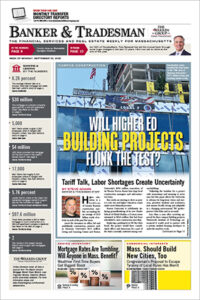
Jarred Johnson
Greater Boston is a region of big ideas. The MBTA, however, isn’t thinking big enough.
Massachusetts lacks a coherent strategy for its transit future. Without it, construction costs will keep rising, congestion will worsen, and housing development will continue to be shaped by today’s transit map – locking in car dependency for generations.
The state keeps solving yesterday’s problems instead of anticipating tomorrow’s needs. A world-class transit system drives business investment, increases property values and unlocks commercial growth. But we’re letting short-term funding limitations dictate our region’s future. The result? A region struggling with some of the worst traffic congestion in the country and a housing crisis exacerbated by poor transit access.
Planning Saves Money
A city and region this wealthy should have a transit system that meets people where they live.
That means fully electrified, high-frequency regional rail. It means robust bus service, not just in the core but in the suburbs, where development pressures are shifting. It means aligning transit investment with real estate development and ensuring businesses and housing are built around transit – projects like Boston Landing and Assembly Row have shown that this is successful.
The Green Line Extension (GLX) was a bespoke project from an agency that hadn’t built a major rapid transit extension in three decades, and the price tag reflected this.
GLX lingered in planning limbo for 30 years, accumulating cost and complexity. Meanwhile, Montreal planned, funded, and opened the first 10 miles of an automated light metro system – the REM – at a fraction of the GLX’s per-mile cost in 8 years.
That’s the difference between a long-term vision and lurching from project to project. Other regions are reaping the benefits of sustained investment.
CRE Loses Out Without T Vision
We’re already paying the price for the MBTA’s lack of planning.
Municipalities make land-use decisions based on today’s transit network, locking in car dependency for decades. A missing rail station or a slow bus connection might not seem like a big deal, but these gaps shape where people live and work.
The result is predictable: too little housing near reliable transit, too much sprawl, and clogged roads. For the CRE industry, this presents a real challenge: commercial and mixed-use developments thrive in areas with transit connectivity, but the state isn’t giving investors the certainty they need.
The Fairmount Line electrification pilot is a rare bright spot – a sign of what’s possible when we think ahead. But it’s also a reminder of how much work remains. While Toronto is delivering nearly 20 miles of light rail, a 5-mile subway extension and a revamped commuter rail system with electrified service every 15 minutes, Boston is still debating what kind of system it needs instead of committing to a vision.
Transit expansion is an investment strategy – one that directly benefits the CRE industry. Well-planned transit increases property values, stabilizes commercial markets, and provides long-term resilience. But Massachusetts treats it as an afterthought, which is why we keep falling behind.
What the T Needs
We need a commitment to long-term transit expansion, not just reactive projects driven by short-term funding.
This means bold, forward-looking choices – prioritizing regional rail electrification, infill stations and frequent, all-day service across the MBTA network. It also means a structured plan – one that developers, businesses and municipalities can rely on.
Over the next five years, Massachusetts should expand electrification pilots and implement transit-oriented zoning reforms to lay the groundwork for future growth. Within 10 to 15 years, we must move beyond incremental improvements and commit to full regional rail electrification while establishing dedicated funding sources.
Over the next three decades, the goal should be a transit network enabling car-free living at scale – reshaping where people live and work, strengthening the state’s economic competitiveness, and ensuring Greater Boston remains a leader in sustainable urban development.
For all of Massachusetts’ political divisions, transit is one of the few areas of widespread agreement. Leaders acknowledge traffic congestion is unsustainable, housing costs are out of control and better transit options are needed. The challenge is turning that understanding into action.
For CRE professionals, this means engaging early in transit planning – pushing municipalities to adopt transit-oriented zoning, advocating for state investment in transit corridors and ensuring that the next decade of development is built around transit, not auto-centricity.
We Can’t Afford a Wish List
The MBTA has a long-range plan in development. That’s a start.
But we can’t afford another bureaucratic exercise that results in a wish list without commitment or a vague plan with no timeline, funding strategy, or private sector engagement.
The plan needs to be realistic but ambitious. It must address the scale of the region’s challenges and be proactive, not just a list of projects that might happen if funding appears someday.
The risks of inaction are too great: falling behind peer cities, worsening congestion and stunted housing production. But the opportunities are enormous. A well-planned, well-funded transit network could transform how people live and work across Greater Boston.
The commercial real estate industry has a vested interest in a functional transit system. CRE leaders should be vocal in pushing for ambitious transit expansion – because the health of their investments and the strength of the region’s economy depend on it.
We have the chance to build something lasting. Now is the time to seize it.
Jarred Johnson is the outgoing executive director of advocacy organization TransitMatters. His opinions represent only those of TransitMatters.






